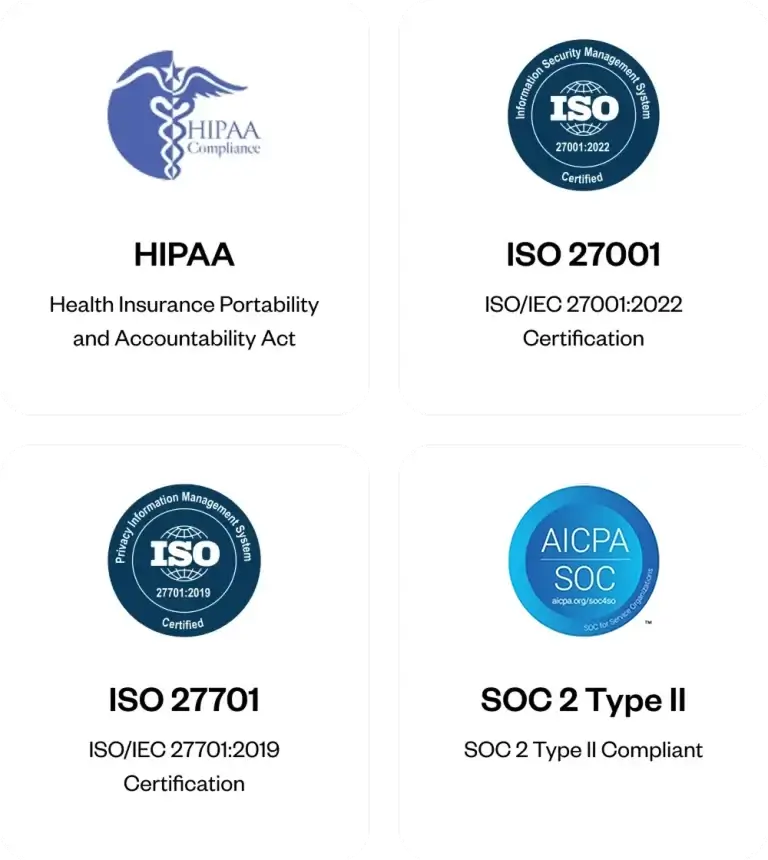In today’s competitive business landscape, customer engagement strategy is crucial to building long-lasting relationships and driving growth. Engaged customers not only generate repeat business but also act as brand advocates, spreading the word about your business and attracting new customers.
In this blog, we’ll explore some effective strategies to enhance customer engagement, including leveraging social media, personalizing customer experiences, providing exceptional customer service, and more.
By implementing these tactics, you can strengthen your connection with customers and ultimately drive business success. So, let’s dive in!
What is customer engagement?
Think of customer engagement as more than just a number that measures how customers feel about your brand. It’s about the different ways a business can create, grow, and maintain relationships with its customers.
Instead of solely focusing on making money, companies that care about customer engagement aim to offer value through top-notch products or services, unparalleled customer support, and effective communication that strengthens the customer’s overall experience.
When a brand or business communicates with customers through personalized and relevant channels like social media, email, or face-to-face interactions, they are building a long-lasting relationship and creating a meaningful connection.
This helps to achieve the goal of customer engagement, which is to create loyal customers who feel connected to the brand, resulting in repeat business and positive word-of-mouth referrals. To achieve effective customer engagement, it is important to understand customers’ needs, preferences, and behaviors and to tailor communication and experiences accordingly.
Read more: Conversational AI – A complete guide for [2023]
Why are customer engagement strategies important?
Customer engagement strategies are important for creating long-term success and sustainability for businesses. By prioritizing customer engagement, businesses can create loyal customers, improve retention rates, generate positive word-of-mouth, and increase sales.
- Increased customer loyalty: When customers feel engaged with a brand, they are more likely to become loyal customers. By building strong relationships and consistently providing value, businesses can create a loyal customer base that will continue to support them.
- Improved customer retention: Engaged customers are less likely to leave a brand or business. By keeping customers engaged, businesses can reduce churn rates and improve retention, ultimately leading to more stable revenue streams.
- Positive word-of-mouth: Engaged customers are more likely to recommend a brand to others. By providing exceptional experiences and building strong relationships, businesses can generate positive word-of-mouth, leading to new customer acquisition and organic growth.
- Increased sales: Engaged customers are more likely to purchase from a brand or business. By providing value and building relationships, businesses can increase sales from existing customers and attract new customers.
What are the key steps to developing a successful customer engagement strategy?
Developing a winning customer engagement strategy requires clear goal setting and action planning for every stage of the customer journey. Brainstorming after purchase or conversion can lead to effective ideas. Customer success depends on factors such as streamlined workflows, well-planned digital marketing campaigns, incentives, and a dedicated team. The key to successful customer engagement is making customers feel valued through meaningful conversations, useful resources, availability, and training for product or service use.
1. Define your target audience
Defining your target audience is crucial for successful customer engagement. By understanding their demographics, psychographics, and behavior, you can create a persona that represents your ideal customer, allowing you to tailor your marketing efforts to appeal to their unique interests and needs. This leads to more effective use of your marketing resources, resonates with your target audience, and ultimately leads to more conversions and sales.
Here are some specific ways that defining your target audience can help promote customer engagement:
- Personalized messaging: When you know who your target audience is, you can craft messaging that speaks directly to their interests and pain points. This makes your marketing more relevant and engaging to them, which can lead to increased interest in your products or services.
- Targeted advertising: Defining your target audience allows you to create targeted advertising campaigns that reach the people most likely to be interested in what you have to offer. This means you can spend your advertising budget more efficiently and effectively, increasing the likelihood of engagement and conversion.
- Relevant content: By understanding your target audience, you can create content that is tailored to their interests and needs. This helps build a relationship with your audience and encourages them to engage with your brand.
- Increased brand loyalty: When you engage with your target audience in a meaningful way, you build a relationship with them that goes beyond a simple transaction. This can lead to increased brand loyalty, with customers who are more likely to engage with your brand over the long term.
2. Set clear goals and objectives
In the context of customer engagement, setting clear goals and objectives is essential because it helps you define what you want to achieve with your marketing efforts. When you set specific and measurable goals, you can track your progress and adjust your strategy accordingly.
The first step in setting clear goals and objectives is to identify what you want to achieve. For example, your goal may be to increase customer retention, attract new customers, or generate more sales. Once you have identified your goal, you can break it down into smaller, measurable objectives that are achievable within a specific timeframe.
For example, if your goal is to increase customer retention, you may set an objective to improve customer satisfaction ratings by a certain percentage over the next six months. Or, if your goal is to attract new customers, you may set an objective to increase website traffic by a certain percentage over the next three months.
3. Deliver exceptional customer experiences
Providing great customer experiences is vital for businesses to foster customer loyalty and grow. To achieve this, businesses must understand their customers’ needs and preferences by analyzing feedback and data. They should then create a customer-centric culture with processes and policies that prioritize the customer experience. Additionally, businesses must respond quickly to customer issues and complaints, and continuously evaluate and improve their customer experience strategy. By investing in the customer experience, businesses can gain a competitive edge and build lasting relationships with their customers.
4. Establish criteria to measure the engagement
Customer engagement metrics help companies understand how often and how well customers interact with them. These metrics guide the creation of better customer engagement strategies and track progress toward business objectives. For instance, to enter a new market, businesses track active users, feature usage, and Net Promoter Score to identify what customers enjoy and encourage them to share the product. To boost revenue from existing customers, businesses monitor customer lifetime value and opt-out metrics to retain disengaged customers. While metrics matter, understanding the stories behind them is crucial. Qualitative data from sources like interviews, discussion groups, and surveys provide insights into why customers behave a certain way. Therefore, supplementing metrics with qualitative data is essential for shaping engagement strategies.
5. Encourage two-way communication
Businesses should foster a culture of open communication and build strong relationships with their customers. This can ultimately lead to increased customer loyalty, satisfaction, and business success.
Here are some tips for encouraging two-way communication:
- Be available and responsive: Make it easy for customers to contact you and be sure to respond to inquiries, questions, and feedback promptly. This helps build trust and shows customers that you value their input.
- Use social media: Social media platforms provide an easy and accessible way to connect with customers. Encourage customers to reach out to you on social media and respond to their comments and messages.
- Offer multiple channels of communication: Not all customers prefer the same communication channels, so offer a range of options such as email, phone, chat, social media, and even in-person if possible.
- Solicit feedback: Actively seek out feedback from customers through surveys, feedback forms, and other tools. This shows that you care about their opinions and are committed to improving your products or services based on their input.
- Host events or webinars: Hosting events or webinars can be a great way to engage with customers and get their feedback. This also provides an opportunity for customers to ask questions and provide suggestions.
- Train employees: Make sure your employees are trained to communicate effectively with customers and encourage open dialogue. Empower them to listen to customer concerns and provide solutions or escalate issues to the appropriate channels.
6. Continuously evaluate and refine your strategy
Regularly evaluate the success of your customer engagement strategy, and adjust it as needed to improve results. Doing this will improve the effectiveness of your business initiatives and build stronger relationships with your customers. This can lead to increased customer loyalty, brand awareness, and business success over time.
To make sure customers are engaged, businesses need to:
- Listen to feedback: Gather feedback through surveys, social media, and other channels. Look for ways to improve and new ideas to try.
- Monitor progress: Keep an eye on website traffic, social media activity, email open rates, and sales. Use this information to identify patterns and find ways to improve.
- Stay up-to-date: Keep up with trends in customer engagement, such as new technologies, social media platforms, and marketing strategies. Stay ahead of the game to find new ways to connect.
- Try new things: Test new customer engagement initiatives and campaigns to see what works and what doesn’t. Use data analytics tools to measure results and make improvements.
- Work together: Collaborate with marketing, sales, and support teams to develop effective customer engagement strategies. Share feedback and ideas to make sure everyone is on the same page.
7. Tailor your service to the individual customer
According to an Experian study, personalized emails resulted in six times higher transaction rates compared to generic ones.
To enhance customer engagement, it’s crucial for businesses to implement personalization, which involves customizing their products, services, and communications according to the distinct requirements and preferences of each customer. This approach helps create exceptional experiences that establish deeper connections and stronger brand loyalty. Personalization is a key factor that differentiates businesses from competitors that offer generic, mass-produced solutions, resulting in a competitive advantage. It also leads to higher customer satisfaction, improved retention rates, and long-term profitability.
Here are some ways that businesses can offer personalized services to customers:
- Use data analytics: Collect data from customer interactions, purchase history, and social media to gain insights into customer preferences and behavior. This can help businesses tailor their products, services, and communications to each individual customer.
- Personalized communication: Address customers by name and use language that resonates with their interests and preferences. Personalized emails, texts, and social media messages can create a more engaging and meaningful experience.
- Customize products and services: Allow customers to customize their orders to suit their specific needs and preferences. For example, restaurants can offer customized menu options or retailers can offer personalized recommendations based on customer purchase history.
- Provide tailored experiences: Offer personalized experiences that cater to individual needs, such as customized product demos, personalized consultations, or exclusive loyalty programs.
- Utilize artificial intelligence (AI): Use AI-powered tools like chatbots, virtual assistants, and recommendation engines to offer personalized services to customers. These tools can analyze customer data and preferences to provide tailored recommendations and support.
How to build a winning customer engagement strategy template?
Your customer engagement strategy should be tailored to your specific business and target audience. However, here’s a basic customer engagement strategy template that you can use as a starting point:
- Define your goals: Determine what you want to achieve with your customer engagement strategy. Are you looking to increase customer retention, boost sales, or improve brand loyalty? Once you have a clear understanding of your goals, you can tailor your strategy to achieve them.
- Identify your target audience: Determine who your target audience is, what their needs and preferences are, and what motivates them to engage with your brand. This will help you create more effective engagement initiatives that resonate with your customers.
- Choose your channels: Identify the channels that your target audience uses to engage with your brands, such as social media, email, or in-person events. Develop a plan to use these channels to connect with your customers and drive engagement.
- Personalize your approach: Use data analytics to gather insights into customer behavior and preferences. Use this information to tailor your products, services, and communications to each individual customer, creating a more meaningful and personalized experience.
- Measure your results: Set metrics to track your progress, such as website traffic, social media interactions, and sales conversion rates. Regularly review these metrics to evaluate the success of your customer engagement strategy and refine your approach as needed.
- Continuously improve: Regularly evaluate your strategy, gather customer feedback, and identify opportunities for improvement. Use this information to refine your approach and ensure that you are continuously improving your customer engagement efforts.
FAQs
How can a customer engagement strategy benefit businesses?
A customer engagement strategy can benefit businesses in many ways, including increased satisfaction and loyalty, improved retention, a better understanding of customer needs, and increased brand awareness and reputation. It helps build lasting customer relationships, increase revenue and profitability, and maintain a competitive edge in the market.
What are the five engagement strategies?
A strong customer engagement strategy can help businesses build lasting relationships with customers, increase revenue and profitability, and maintain a competitive edge in the market.
Personalization: Offering personalized experiences, products, and services tailored to individual customer needs and preferences.
Multichannel engagement: Interacting with customers across multiple channels, such as email, social media, and chatbots, to meet them where they are and provide seamless experiences.
Proactive communication: Anticipating and addressing customer needs through proactive communication, such as sending personalized recommendations, updates, or reminders.
Customer feedback and analysis: Regularly collecting and analyzing customer feedback to identify areas for improvement and tailor strategies accordingly.
Employee engagement: Engaging employees and providing them with the tools and resources they need to deliver exceptional customer services, such as training programs and clear communication channels.
What are the three pillars of customer engagement?
Personalization: Offering personalized experiences to customers by tailoring products, services, and communications to meet their unique needs and preferences.
Proactivity: Being proactive in engaging with customers by reaching out to them before they have an issue or need, and anticipating their needs through data analysis.
Empathy: Demonstrating empathy toward customers by actively listening to their feedback, understanding their pain points, and taking steps to address their concerns.
What are the 4 Ps that improve customer service?
People: Having the right people with the necessary skills and attitude to provide excellent customer service is essential. This includes hiring, training, and retaining employees who are customer-focused and can handle various customer situations.
Processes: Implementing efficient and effective processes for handling customer inquiries, complaints, and feedback can help ensure timely and satisfactory resolution of issues. Streamlined processes can also enhance the customer experience and reduce frustration.
Policies: Establishing clear policies and guidelines for customer service can help ensure consistency and fairness. Policies should be communicated clearly to customers and employees to avoid misunderstandings and promote transparency.
Products: Offering high-quality products that meet customer needs and expectations is crucial for building customer loyalty and satisfaction. Providing customers with product options and educating them about the benefits and features of different products can help improve the customer experience.
What drives customer engagement?
Understanding and addressing customer needs and preferences is key to driving engagement and building lasting relationships.
Several factors can drive customer engagement, including:
Personalization: Customers are more likely to engage with businesses that offer personalized experiences and tailored communication.
Relevant content: Providing relevant and valuable content that resonates with customers can help drive engagement.
Omnichannel presence: Being present on multiple channels, such as social media, email, and mobile, allows businesses to connect with customers where they are and provide seamless experiences across channels.
Proactive communication: Proactively reaching out to customers to address their needs and concerns can help build trust and strengthen relationships.
Exceptional customer service: Providing excellent customer service and support can drive engagement and foster loyalty.
Emotional connection: Building an emotional connection with customers through storytelling, shared values, or other means can drive engagement and increase brand loyalty.
Gamification: Incorporating game-like elements, such as rewards, challenges, and competition, can increase engagement and create a sense of fun and excitement.
What is a customer engagement funnel?
A customer engagement funnel is a model that outlines the stages of the customer journey, from initial awareness to loyal advocacy, and helps businesses understand how to engage with customers at each stage of the process. It is similar to the traditional sales funnel, but instead of focusing solely on converting prospects into customers, it also emphasizes building and maintaining relationships with customers to drive repeat business and referrals.
The customer engagement funnel typically includes the following stages:
Awareness: This is when a potential customer first becomes aware of your business or product through advertising, social media, or word-of-mouth.
Interest: Once a customer is aware of your business, they may begin to show interest by visiting your website, reading reviews, or engaging with your social media content.
Consideration: At this stage, the customer is actively considering whether to make a purchase. They may compare your product to competitors, read product descriptions and features, and evaluate pricing and promotions.
Action: The customer decides to make a purchase and complete the transaction.
Loyalty: After a customer has made a purchase, the goal is to maintain their loyalty through ongoing engagement and exceptional customer service. This can lead to repeat purchases and positive word-of-mouth marketing.
Advocacy: The final stage of the funnel is when loyal customers become advocates for your brand, recommending it to others and helping to expand your customer base.
By understanding the customer engagement funnel, businesses can create targeted strategies and tactics to engage with customers at each stage of the process and drive long-term relationships and revenue.
What is the customer engagement lifecycle?
The customer engagement lifecycle is a framework that maps out the various stages of a customer interacting with a business. It typically includes the following stages:
Awareness: The customer becomes aware of the business and its products or services.
Acquisition: The customer takes an action that leads to their first interaction with the business, such as visiting the website or making a purchase.
Onboarding: The business welcomes the customer and helps them start their purchase, providing support and guidance as needed.
Engagement: The customer uses the product or service and interacts with the business, providing feedback and building a relationship with the brand.
Retention: The business continues to engage with the customer over time, providing ongoing value and support to encourage them to remain loyal.
Advocacy: The customer becomes a loyal fan of the business and recommends it to others, helping to attract new customers and grow the business.
Want to build stronger relationships with your customers?























